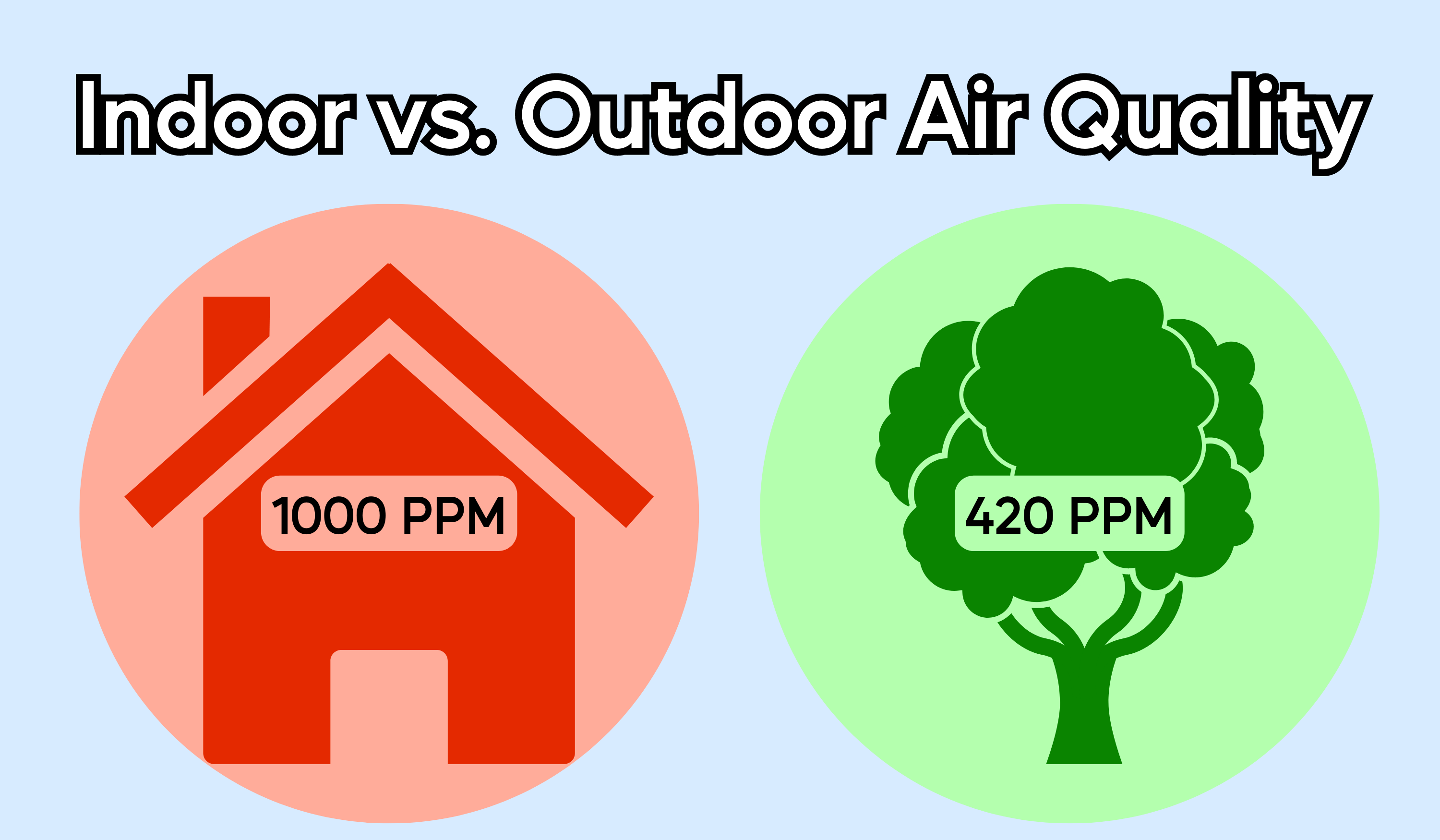
The Silent Influence of Indoor Air Quality on Productivity
Would the quality of your work be better if you completed it outside at a park, rather in your office? It is quite likely (though maybe not if you live in New York City right now).
Studies are showing that indoor air quality (IAQ) can be worse than outdoor air quality, even in the most industrialized cities (EPA). People don’t typically notice differences in air quality unless it is extreme, so they don’t feel the need to check air quality or think of how it is affecting their health.
In today's fast-paced world, we often focus on the external factors that impact our health and productivity, such as exercise and nutrition. However, the quality of the air we breathe indoors can have a profound effect on our health and productivity, influencing everything from respiratory health to cognitive function. In this blog post, we will delve into the importance of IAQ, its impact on human health, and how it can significantly boost productivity levels.
The Impact of Indoor Air Quality
Indoor air quality refers to the condition of the air within and around buildings, especially as it relates to the health and comfort of occupants. Poor IAQ can result from various factors, such as inadequate ventilation, chemical pollutants, fuel-burning appliances, mold growth, and lack of HVAC maintenance.
 Short-term exposure to poor IAQ can lead to symptoms like headaches, fatigue, trouble concentrating, and irritation of the eyes, nose, throat and lungs. In the long run, it can contribute to the development or exacerbation of respiratory conditions, including asthma and allergies. Additionally, studies have shown that prolonged exposure to indoor air pollutants can increase the risk of cardiovascular disease and certain types of cancer (OSHA).
Short-term exposure to poor IAQ can lead to symptoms like headaches, fatigue, trouble concentrating, and irritation of the eyes, nose, throat and lungs. In the long run, it can contribute to the development or exacerbation of respiratory conditions, including asthma and allergies. Additionally, studies have shown that prolonged exposure to indoor air pollutants can increase the risk of cardiovascular disease and certain types of cancer (OSHA).
Beyond physical health, IAQ also affects our cognitive abilities and productivity. Research suggests that high levels of carbon dioxide (CO2) in indoor environments can impair cognitive function and decision-making abilities (Berkeley Lab). While typical outdoor levels of carbon dioxide (CO2) are around 420 parts per million (ppm), indoor levels can reach several thousand ppm depending on the number of people occupying an area (UC San Diego). For example, CO2 levels in office buildings typically do not exceed 1000 ppm, except in meeting rooms where groups of people gather for extended periods of time. Similarly, classrooms frequently exceed 1000 ppm, sometimes even exceeding 3000 ppm, due to poor ventilation.
Poor IAQ can cause discomfort, reduce concentration levels, and result in increased absenteeism and decreased work performance in adults and children. Conversely, a well-ventilated space with optimal IAQ has been shown to enhance cognitive performance, improve attention span, and boost overall productivity.

Signs of Poor Indoor Air Quality
These are some potential signs of poor IAQ that you can look out for in your home and workplace.
- Abnormal and noticeable odors
- Stale or stuffy air
- Clear lack of air movement
- Dirty or broken HVAC systems
- Too much humidity - standing water and wet surfaces can be a breeding ground for molds, mildews, bacteria, and insects
- Mold and mildew
- Feeling healthier in other places
Improving Indoor Air Quality
Fortunately, there are several measures we can take to improve indoor air quality and safeguard our health and productivity. Adequate ventilation is crucial, ensuring a constant supply of fresh air and the removal of stale air. Regular maintenance of HVAC systems, including air filters, is vital to prevent the buildup of dust, allergens, and other pollutants.
Regular cleaning and prompt removal of mold or moisture-damaged materials can also help prevent the growth of mold and the associated health risks. Disinfecting regularly by fogging also improves air quality by removing germs and allergens from surfaces and the air. Breezy BioCare RTU is a Green Clean Certified disinfectant that is also EPA-approved, so it doesn’t add harmful chemicals to the air.
 Introducing air purifiers and indoor plants can further enhance IAQ. Air purifiers with HEPA filters can effectively remove fine particulate matter, allergens, and other pollutants. Indoor plants act as natural air purifiers, absorbing carbon dioxide and releasing oxygen while also reducing levels of certain volatile organic compounds (VOCs).
Introducing air purifiers and indoor plants can further enhance IAQ. Air purifiers with HEPA filters can effectively remove fine particulate matter, allergens, and other pollutants. Indoor plants act as natural air purifiers, absorbing carbon dioxide and releasing oxygen while also reducing levels of certain volatile organic compounds (VOCs).
Monitoring air quality regularly and knowing when to ventilate, disinfect, or use an air purifier is beneficial especially in places such as offices and schools. These places are often occupied by large numbers of people, which can lead to the build-up of pollutants in the air. By utilizing air quality monitors and taking steps to improve, you can help to protect the health of your employees or students.
Indoor air quality is a crucial yet often overlooked factor that influences our productivity. By understanding its impact and taking proactive measures, we can create healthier and more productive indoor environments. Prioritizing adequate ventilation, controlling pollution sources, and implementing air purifiers or indoor plants can all contribute to improved IAQ. By breathing cleaner air, we enhance our well-being, reduce the risk of respiratory illnesses, and boost cognitive function, ultimately leading to a more productive and fulfilling life.




